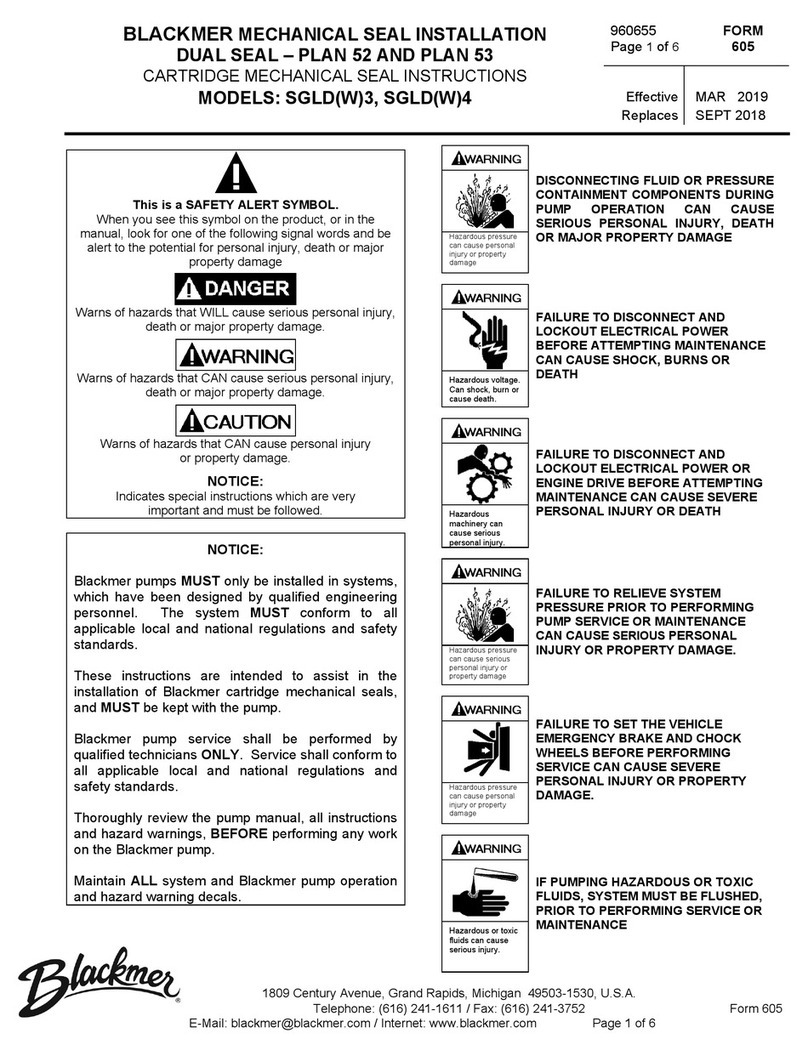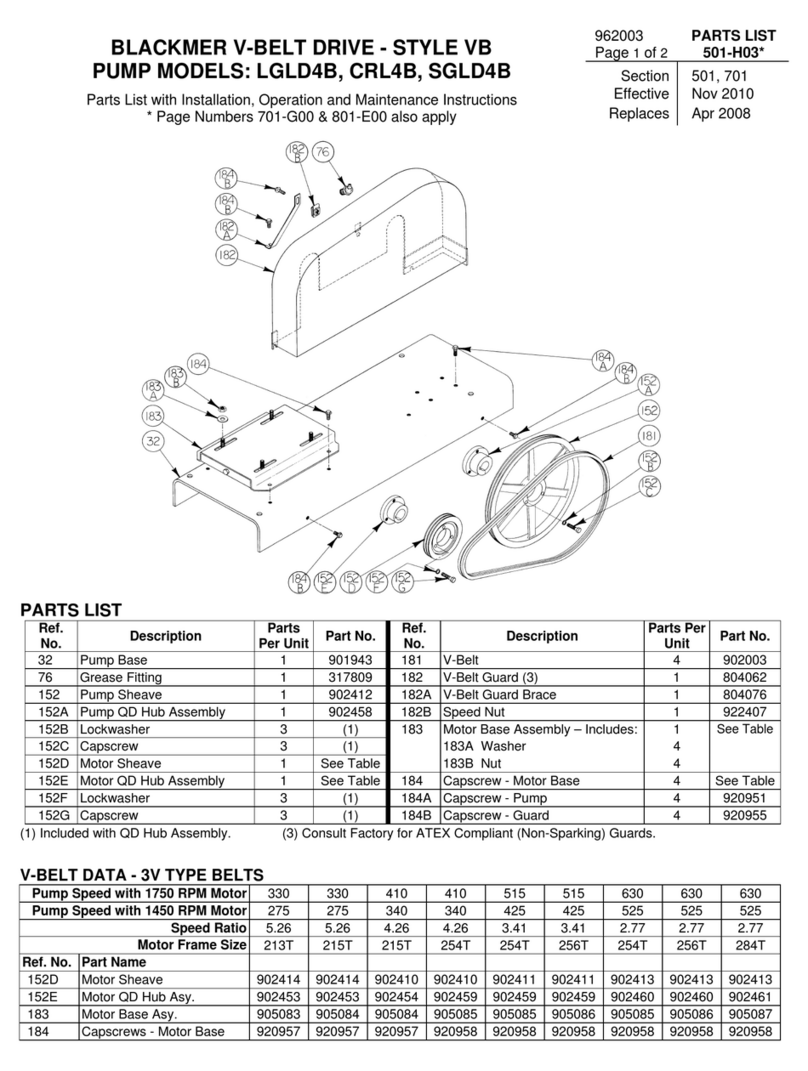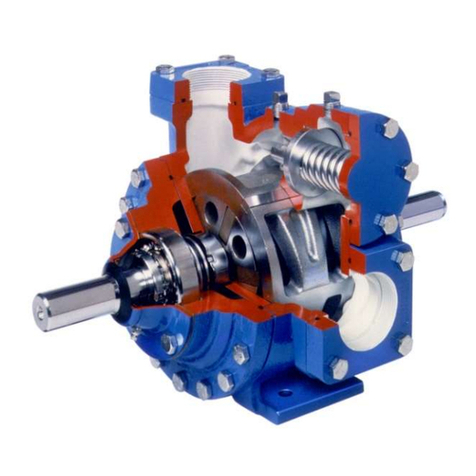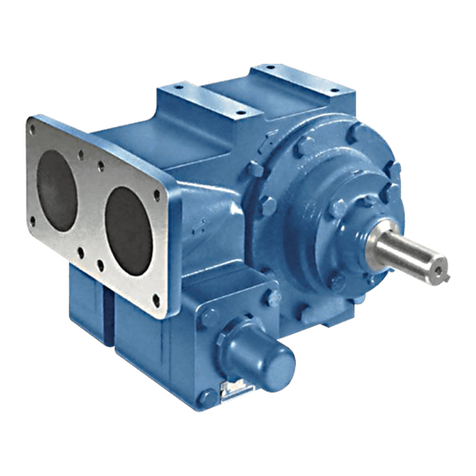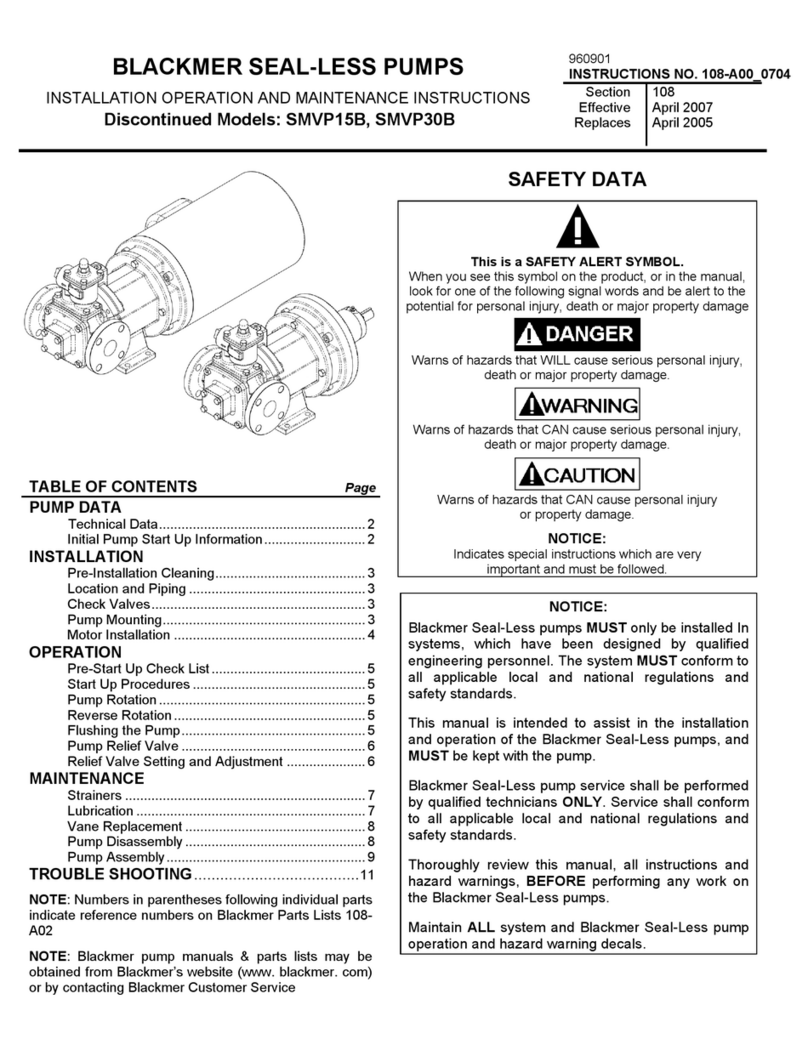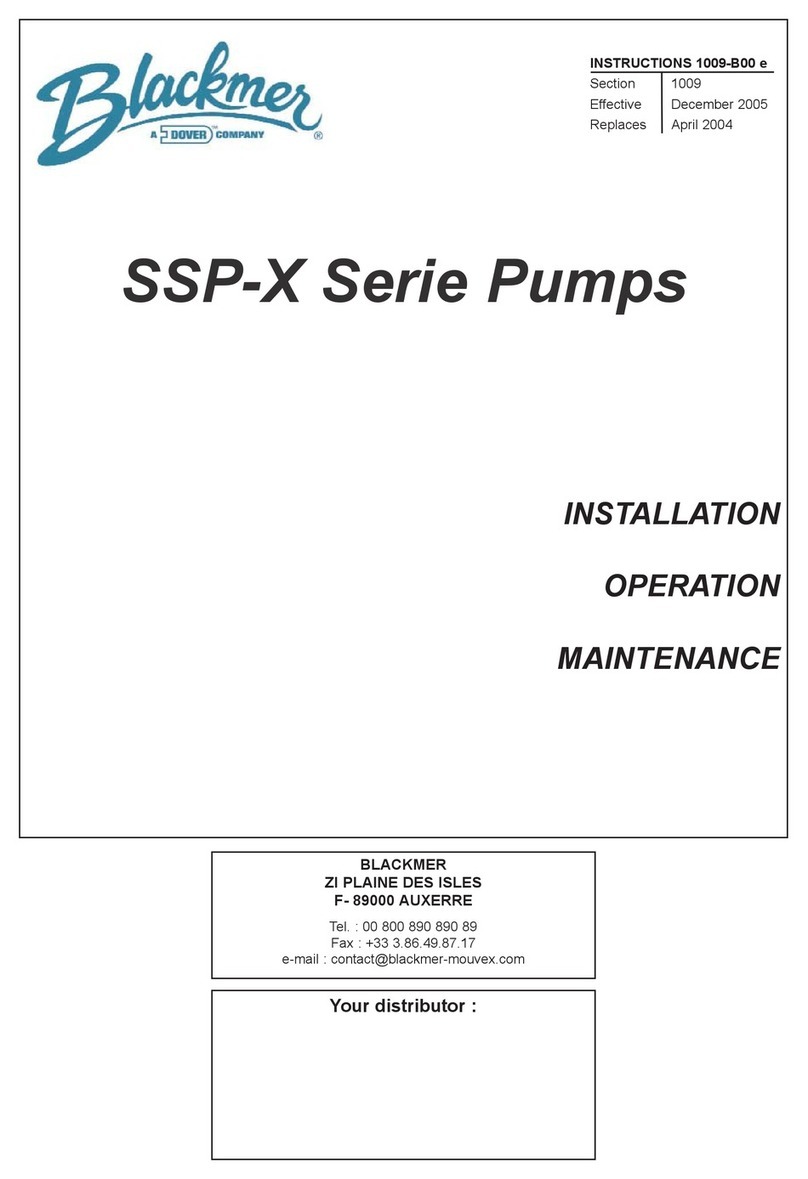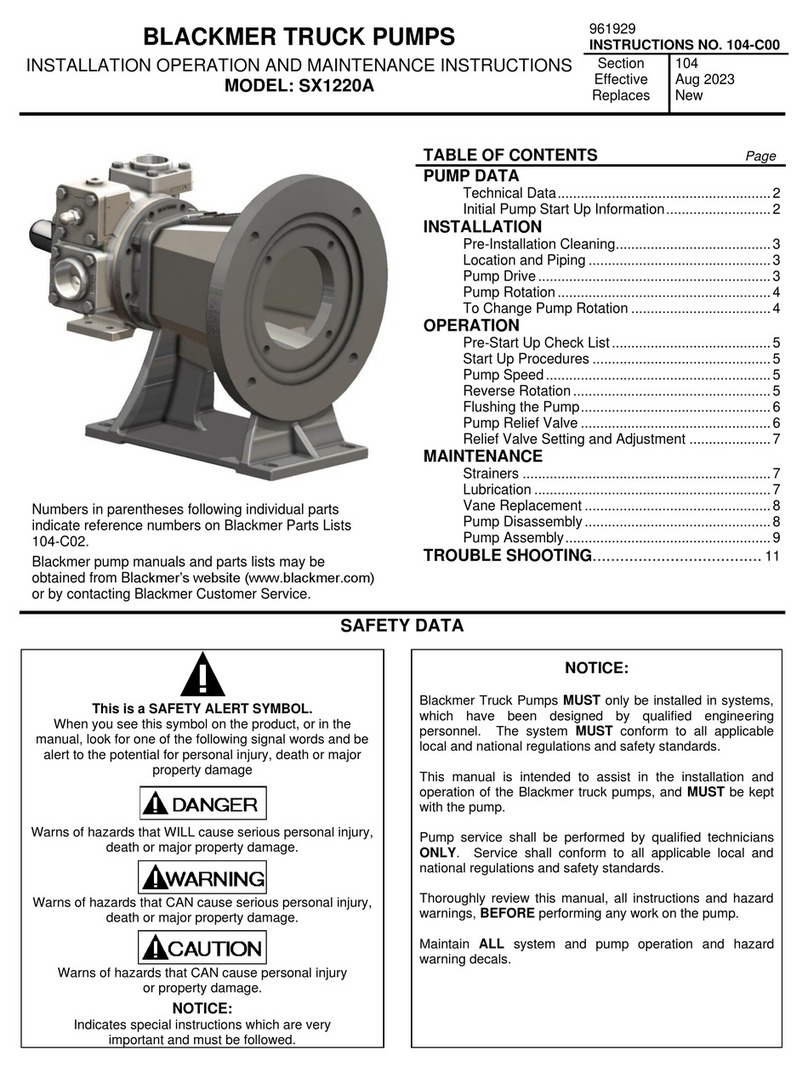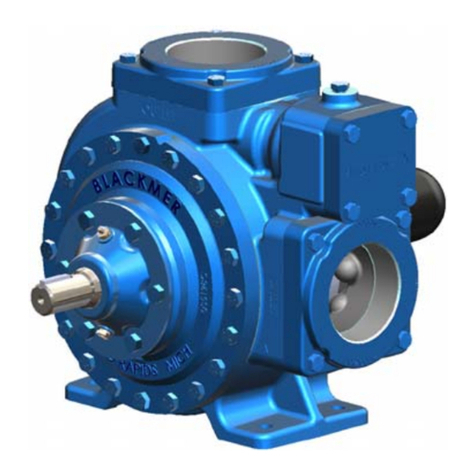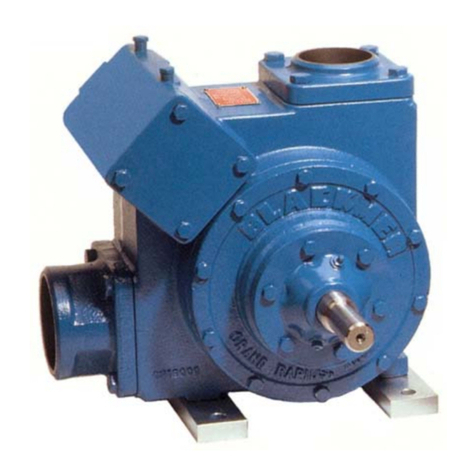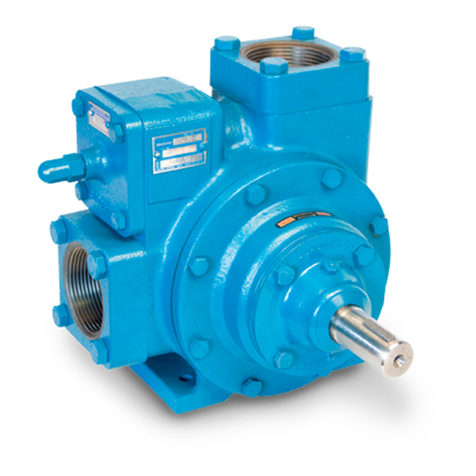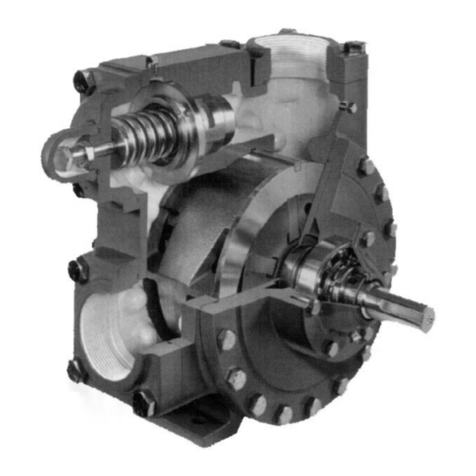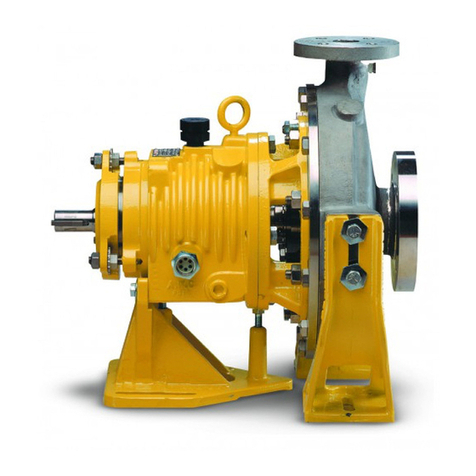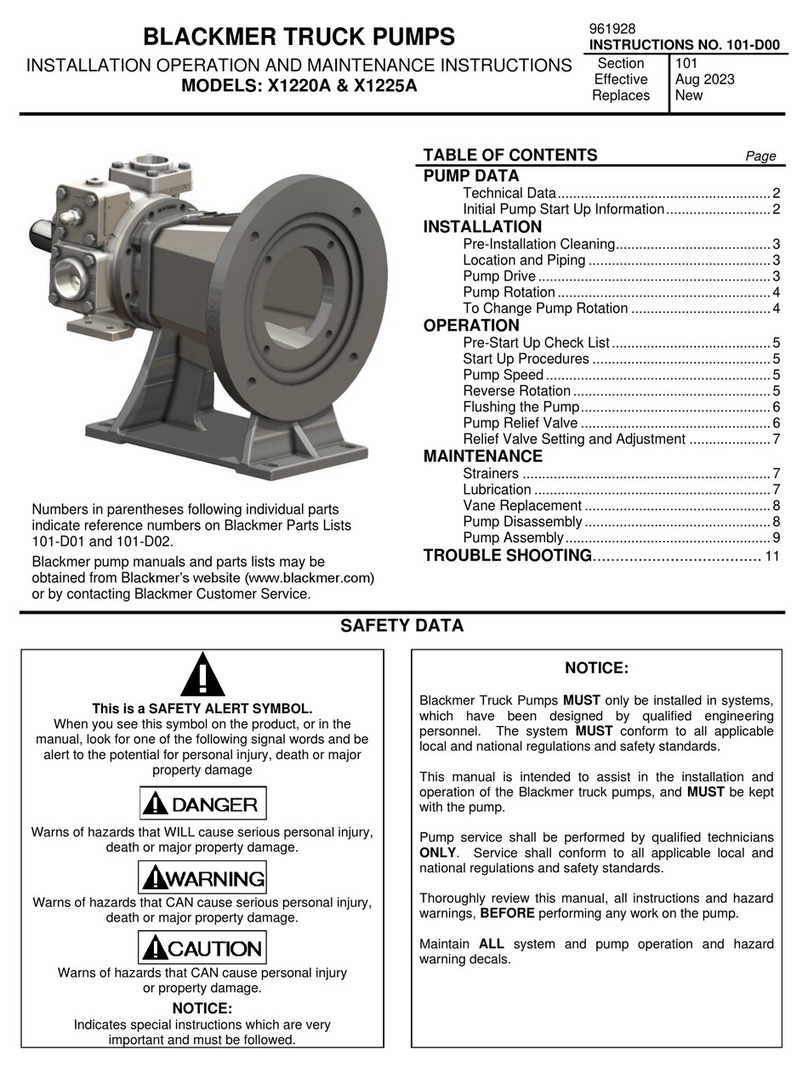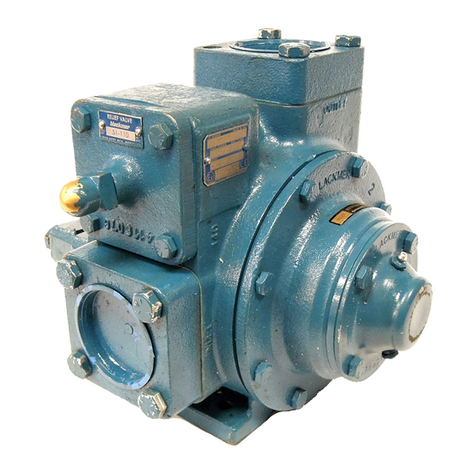
205-B00 page 8/12
MAINTENANCE
PUMP ASSEMBLY
Before reassembling the pump, inspect all component
parts for wear or damage, and replace as required. Wash
out the bearing/seal recess of the head and remove any
burrs or nicks from the rotor and shaft.
1. Reassemble the OUTBOARD side of the pump first:
a. For a CLOCKWISE rotation pump, position the pump
cylinder with the INTAKE port to the left.
b. For a COUNTERCLOCKWISE rotation pump, position
the pump cylinder with the INTAKE port to the right.
2. Install a new head O-ring (72) in the groove in the head.
Lightly grease the outside circumference of the O-ring to
facilitate head installation. Start in on one side of the
groove, stretching ahead with the fingers, as shown in
Figure 7.
Figure 7
3. Install the head (20) on the outboard side of the cylinder.
Install and uniformly tighten four head capscrews (21) 90°
apart, torquing to 25 lbs. ft (34 Nm).
4. LIP SEAL ASSEMBLY (if equipped)
The lip seal assembly consists of a metal housing with a
lip seal in its inner diameter. Refer to Figure 8
BEARING
HEAD LIP SEAL
HOUSING
LIP SEAL
Figure 8 Lip Seal - TX206A
Note: When installing the lip seal, be careful not to
damage the lip seal.
a. Push the lip seal (152A) squarely into the housing
(152B). The lip seal should seat flush or slightly
recessed in the housing, around its entire diameter.
b. Push the lip seal and housing assembly into the head
recess with the lip seal inward. The lips of the lip seal
will face the rotor when the housing is installed. Make
sure the housing is bottomed out in the back of the
head.
c. Apply a small amount of light motor oil on the shaft to
facilitate lip seal installation.
5. MECHANICAL SEAL (If equipped)
Apply a small amount of motor oil in the head recess.
Push the mechanical seal assembly (153) into the recess
of the head with seal jacket drive tangs inward. The pin in
the stationary seat must be between the lugs in the back
of the head recess.
6. Hand pack the ball bearing (24) with grease. Refer to the
"Lubrication" section for the recommended grease.
7. Install the bearing into the head recess. The bearing balls
should face outward, with the grease shield inward.
Ensure the bearing is fully and squarely seated against
the lip seal housing or mechanical seal. Install two 3/8"
(10 mm) washers and two bearing cover capscrews (28)
to clamp the bearing and compress the lip seal housing
for proper bearing locknut adjustment (see Figure 9). The
washers and capscrews will be removed after the locknuts
are adjusted. Leave the two capscrews and washer in
place to retain the bearing during assembly.
Figure 9 Clamping the Bearing
8. Turn the pump cylinder around and begin assembly on the
opposite, inboard end.
9. Inspect the vanes (14) and push rods (77) for wear and
damage, and replace as follows:
a. Partially install the non-driven end of the rotor and
shaft (13) into the open side of the pump cylinder.
b. Leave part of the rotor outside of the cylinder so that
the bottom vanes can be installed and held in place as
the push rods are installed in the push rod holes of the
rotor. Insert the new vanes into the rotor slots with the
rounded edges outward, and the vane relief grooves
facing TOWARDS the direction of rotation. Refer to
Figure 4.
c. After the bottom vanes and push rods are installed,
insert the rotor and shaft fully into the cylinder.
d. Install the remaining vanes into the top positions of the
rotor. If equipped with a mechanical seal, rotate the
shaft by hand to engage the drive tangs of the seal
jacket in the rotor slots.
10. Install the inboard head, mechanical seal or lip seal, and
bearing as instructed in steps 2 through 7. Apply a thin
coating of motor oil on the inboard shaft to aid installation.
11. Rotate the shaft by hand to engage the mechanical seal
drive tangs (if equipped), and to test for binding or tight
spots. If the rotor does not turn freely, lightly tap the rims
of the heads with a soft faced mallet until the correct
position is found. Install all of the remaining head
capscrews for each head and uniformly torque to 25 lbs. ft
(34 Nm).
